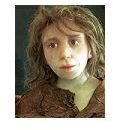Who Were the Neanderthals? Information on Prehistoric Human Relatives
Who Were They?
When it comes to prehistoric times, most people are only interested in the dinosaurs. However, humans have been around since the
time of the dinosaurs. The word “Neanderthals” is something that many people recognize, but few actually know what, or rather who, they were. Learn more about your ancestors.
Neanderthals were a human-like species that lived between about 200,000 and 28,000 years ago. Early Neanderthals had no contact at all with other people, but after quite some time had passed, the people who would be considered “modern day humans” (the people like you and me) began showing up where the Neanderthals lived. Even though they looked in some ways like us modern humans, they are not believed to be related at all and scientists believe that they are simply two different groups of people. There were probably no more than 100,000 “members” of the Neanderthal group at any one time, meaning that it really was not a large amount of people.
What Did They Look Like?

While Neanderthals and modern humans are not considered to be the same, they did come from a common ancestor, which means that Neanderthals looked very much like the humans we are familiar with today. However, there are certain characteristics that give them away. Neanderthals were much shorter than we would consider normal for today: males were about 5’4” and females were around 5’1”, and were considered to be rather bulky and muscular. Scientists believe that height was an adjustment to deal with a colder climate. Their heads were larger as well because their brains were actually bigger than humans today, and their chins stuck out farther. Even their front teeth were larger than today’s humans.
Where Did They Live?

Neanderthals are believed to have lived all over Europe, most of southwestern and central Asia, and even parts of Africa. Their fossils (just like dinosaurs) have been found in all of those places. The first major discoveries of Neanderthal fossils were in the 1800’s – 1829 in Belgium, 1848 in Gibraltar, and 1856 in Germany. The 1856 discovery in the Neander Valley gave them their name. The fossils have allowed scientists to learn a lot about the Neanderthals, including ways that they lived, what kind of illnesses they had, and even how they died.
What Kinds of Things Did They Do?
Neanderthals were considered a hunter-gatherer group, which meant that they relied on hunting animals and gathering various plants for their food. Fossils have shown that they ate a very meat-heavy diet, which meant that they must have been very good at hunting. They were very skilled at making various tools from materials such as stone, and used them for everything from hunting (they used spears to kill animals from far away) to sewing (early needles). The discovery of needles meant that the Neanderthals wore clothing – something that was unheard of for any early humans up until their time and made them unique. Evidence has also shown scientists that the Neanderthals lived much like any other group. They had houses, used fires for cooking and heat, and even did something else unique for their time – they buried their dead in marked graves, often with offerings of flowers.
What Happened to Them?

It is not completely known why Neanderthals went extinct. Some scientists believe that the appearance of the modern humans pushed the Neanderthals out of their original living areas and forced them to adapt to new places. In addition to that, new technology from the modern humans was making the old ways of doing things outdated. This put the Neanderthals at a disadvantage when it came to hunting, as well as defending themselves from predators. It was also around that time when the weather began to change, causing cooler temperatures and further changing the life that the early Neanderthals were used to. All evidence of their existence stopped around 28,000 years ago, where the last fossils were found in Western Europe, so scientists believe that was the last place that they lived.
References
Sources:
Human Evolution, Neanderthals
Smithsonian, What Does It Mean to Be Human?
Images:
Christoph P.E. Zollikofer. “Neanderthal Child”. https://commons.wikimedia.org/wiki/File:Neanderthal_child.jpg
Claire H. “Neanderthal Foot Print”. https://commons.wikimedia.org/wiki/File:Neanderthal_Foot_Print.jpg
Trockennasenaffe. “Neanderthal position”. https://commons.wikimedia.org/wiki/File:Neanderthal_position.png
This post is part of the series: All About Neanderthals
Learn all sorts of information about Neanderthals, from their origin and history to what kinds of tools they used!
